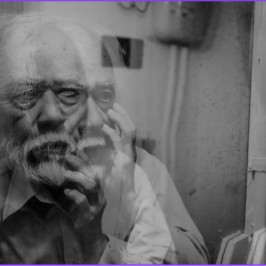
By: Brian Warner
Responses to stress can vary from person to person. Sometimes we pick them up early in childhood by watching the adults around us manage their own problems. Other times, we can hardly even call them stress management skills as much as reflexes once we realize how common they are. For people with borderline personality disorder (BPD), coping can be a particularly difficult part of life, requiring them to unlearn many of their own reflexes to stress like substance use, disordered eating, or self-harm. Marsha Linehan, Ph.D., inspired by her own struggles, developed an approach to treatment heavily rooted in improving coping skills, or as she says in her book, Building a Life Worth Living, “how to tolerate and accept distress.” She named it Dialectical Behavior Therapy (DBT).
Since the 1980s, DBT has expanded widely from just treating people with BPD and found similar success with people suffering from mood disorders (like major depression and bipolar disorder), anxiety disorders, eating disorders, ADHD, and addiction. While the name “Dialectical Behavior Therapy” is a mouthful to say and its long list of techniques can look daunting, its effectiveness for so many different people comes from its skills’ simplicity. Think about the last bad day you had and picture your own response to stress. Why does it work? It’s likely that, despite its clinical-sounding name and without even realizing it, you’re using DBT, too. As just an example, let’s break down one DBT skill, TIPP.
Temperature
What do some of the most common sayings about anger have in common? “Seeing red.” “Steamed.” “Fired up.” “Smoke coming out of your ears.” “Losing your cool.” No one ever pictures themselves getting mad and staying at a comfortable room temperature. Violent crime even goes up when things get too hot. During an argument, you may feel it suddenly getting warmer as your nervous system feels like it’s being threatened, causing your heart to beat faster and blood vessels to widen. You go to the bathroom to literally and figuratively cool down and splash some cold water on your face. This makes up the first technique in DBT’s TIPP skill, Temperature, and is not just reserved to splashing yourself with cold water; taking a cold shower, putting an ice pack on your face, and rubbing an ice cube around your wrists all work in the same way. The parasympathetic nervous system gets activated, bringing down your blood pressure, improving your circulation, and decreasing cortisol, the primary stress hormone. This is such a common strategy that therapists and schools have started making their own reusable “cool down cubes.” Thankfully, it’s so easy to find space to work on this technique that you could do it (and maybe already have) everywhere from your house to the office to a restaurant bathroom.
Intense Exercise
43% of adults say that they exercise to manage stress and, of that, more than 60% say that it’s “very” or “extremely” effective. Some office workers have gone beyond the standing desk to the treadmill desk, getting ahead of stress before it gets them. Mindy Kaling has even joked about psyching herself up for a run by fantasizing about stressful situations. Nearly any search for “stress reduction tips” will include exercise, so it’s no coincidence that TIPP’s second technique is Intense Exercise. Exercise stimulates the production of endorphins, the body’s natural morphine, which boosts your mood, decreases pain, and makes it easier to relax. It also brings adrenaline and cortisol back under control if a heated argument with your partner threw them out of whack. Right away you might assume that a contact sport like boxing would be the best release for pent-up stress, but exercise looks different for everyone. For you, this may look like a run around the neighborhood or a dance class at the gym – maybe it’s as simple as mowing the lawn.
Paced Breathing
There’s a reason everyone talks about focusing on your breathing, and it’s not just because oxygen is essential. It’s so easy to be in the middle of a stressful conversation, bumper-to-bumper traffic, or even watching a stressful scene in a movie, and realize that you’ve been holding your breath. When you do this, the muscles responsible for breathing are restricted by tension and only allow air into the top part of the lungs, increasing blood pressure and cortisol levels. Instead, when you remember to take a few deep breaths in and out to level yourself off, you’re practicing the third TIPP technique, Paced Breathing. By taking longer, deeper breaths (usually five or six per minute) and directing air throughout the lungs, vagal nerve activity is increased and cognition, decision-making, heart rate, and stress levels are improved. This is especially effective whenever you exhale longer than you inhale (breathing in for four seconds and out for six seconds, for example). As annoying as it can feel to be told to “take a deep breath” when all you want to do is breathe fire, it’s not bad advice – and luckily, it’s a tool that can be taken everywhere.
Paired Muscle Relaxation
Sometime around two or three in the afternoon, you might notice that you’re leaning in toward your computer screen and your shoulders are up by your ears, giving you a slight hunch. Or maybe you’ve been going through e-mails all day and, without even meaning to, your eyebrows are so furrowed that people keep asking what’s wrong. There’s a reason we tell someone stressed to “loosen up.” Under stress the brain goes into “protection mode,” which sends a signal to the nerves and releases adrenaline, causing our muscles, especially around the neck and back, to tense up. Notice how much of a reset you feel once you become aware of it and finally do loosen up? That makes up TIPP’s fourth and final technique, Paired Muscle Relaxation. The muscle between our eyebrows that helps us convey emotions like anger or annoyance is called the Corrugator Supercilii, and it’s also a major contributing factor toward headaches, migraines, and even just feeling stressful emotions longer than you otherwise would. When the pressure from this muscle is relieved, however, it’s been shown to improve mood and relieve pain symptoms for 79% of people. The same idea applies for any other muscle group; relieving the pressure on a muscle markedly increases blood flow across the body, which benefits everything from your heart and lungs to your energy and immune system. This works particularly well when paired with Paced Breathing, and can involve one, multiple, or every muscle group.
Even though we know it happens to everyone, when we’re in the middle of a bad day an impartial perspective is near the bottom of a long list of tools we want to reach for (it can usually be found somewhere around “being told to calm down.”). This isn’t a personal failing, though; anger can make all of us worse at perspective-taking. It’s hardwired into your brain to forget that the tools you turn to when you’re angry or upset are likely the same things that many other people rely on just as much. DBT’s success lies in its applicability for all different kinds of people to get past this and remember the resources available to them. By looking around for and relying on these tools, we’re able to recognize that the world is set up to help us deal with the daily stresses we all share and better confront them as they come our way.
If DBT seems like something that might help you in your journey to mental wellness, visit resourcegrp.org/dbt for more information on our DBT program.
DISCLAIMER
The information, including but not limited to, text, graphics, images and other material contained on this website are for informational purposes only. No material on this site is intended to be a substitute for professional medical advice, diagnosis, or treatment. Always seek the advice of your physician or other qualified healthcare provider with any questions you may have regarding a medical condition or treatment and before undertaking a new health care regimen, and never disregard professional medical advice or delay in seeking it because of something you have read on this website.






